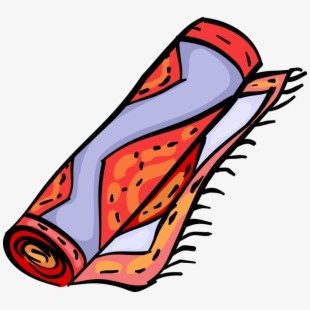
After having finished Bram Stoker's Dracula I recently went to my bookshelf and looked for another book that I could read in English but would be a bit smaller than the heavy tale of a vampire's trip to London. There I found "The Figure in the Carpet" by Henry James, the American-British author who had the great honour to study in my hometown in Germany, Bonn. I think I bought this small book especially due to its low price of 1 Euro - the price label was still on the spine. A tiny book of 50+ pages would actually be great to work a bit more concentrated on my English grammar and vocabulary and so I gave it a try. First I read only the first chapter of two and a half pages but now I think it would be nice to read the whole thing in a row and then write in bits and pieces about it. Today I start with the first chapter and try to make a clue of what I've read.
The Figure in the Carpet (1896) is a novella (a long short story) by Henry James. I don't know what the book is about but I would guess that a fancy carpet plays an important role. That our protagonist, a first-person narrator, sells rugs and carpets for a living seems to be not so likely since he's more interested in writing about celebrities and famous authors. But this conclusion is of a vague preliminary character, considering that I've read only two pages.
In the first chapter, the narrator gets an interview with the author Vereker, about whose newest book he is supposed to write a review. He is doing this task most eagerly and seems to be confident with the course of the process. The final article gets the approval of the office and therefore the protagonist feels some kind of relief. Nevertheless, the gross reaction of his friend George Corvick who was originally supposed to write the article but had to leave the country for personal issues, lets him doubt the quality of his work.
Until know I'm presented to these characters besides the protagonist:
George Corvick: He is also a feuilleton journalist but already with more financial and professional success than the narrator. They are befriended and when Corvick has to go off to Paris due to personal matters, he gives his newest job, an interview with the writer Hugh Vereker, to his fellow colleague. The magazine or newspaper they are writing for seems to hear to the name "The Middle".
Hugh Vereker: An apparently renowned author who recently published a new book. After the interview with him, the narrator confirms his intelligence but finds also that he's neither "the biggest of the lot".
Lady Jane: Maybe the secretary of The Middle.
Gwendolen Erme: The love interest of Mr. Corvick who claims her not to be "pretty but awfully interesting". A grumpy old mother of the young lady seems to stand in the way for the lovebirds to go the next step that - reminding the date of publication - would obviously be marriage. Mrs Erme is also a writer and began to publish novels at an early age. She lives in Paris with her mother.
Wow - I've never heard of this novella. But I did enjoy Henry James' The Turn of The Screw. Perfect for Halloween! Also, your writing is superb!!
Very good post! You extended yourself and used a lot of complex sentences. There were some problems, but all in all, a great effort and lots to learn as a result. Please let me know if you have any questions about my corrections — I'm a professional editor and can explain anything)))
Thank you as always for your corrections! I definitely have to work on my commas, but apart from that where do you think are my biggest weaknesses?
You're very welcome. I think a good first step would be to implement all the corrections so that you're physically, visually and mentally aware of what you're changing. As you do, really look at what's different between your original and my correction. If it represents a pattern, make a note and use the whole sentence as an example. (I'm assuming you keep some sort of notebook for English). Then, in your next composition, try to use the same form(s) correctly. In doing this, you'll see for yourself where you need improvement. Your English is very advanced at this point, so it's just a matter of fine-tuning what you already know and expanding on that knowledge with every post. Naturally, as you implement these corrections, questions will arise. Feel free to contact me within the same correction if you need further explanation or examples.